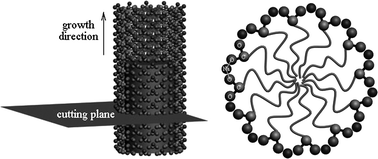Gel phase originating from molecular quasi-crystallization and nanofiber growth of sodium laurate–water system
Abstract
Adding

* Corresponding authors
a
State Key Laboratory of Solid Lubrication, Lanzhou Institute of Chemical Physics, Chinese Academy of Sciences, Lanzhou 730000, P. R. China
E-mail:
jhao@sdu.edu.cn
Fax: +86 531 8836 6074
Tel: +86-531-88366074
b Key Laboratory of Colloid and Interface Chemistry (Shandong University), Ministry of Education, Jinan 250100, P. R. China
c Graduate School of the Chinese Academy of Sciences, Beijing 100039, P. R. China
Adding

 Please wait while we load your content...
Something went wrong. Try again?
Please wait while we load your content...
Something went wrong. Try again?
Z. Yuan, W. Lu, W. Liu and J. Hao, Soft Matter, 2008, 4, 1639 DOI: 10.1039/B804157A
To request permission to reproduce material from this article, please go to the Copyright Clearance Center request page.
If you are an author contributing to an RSC publication, you do not need to request permission provided correct acknowledgement is given.
If you are the author of this article, you do not need to request permission to reproduce figures and diagrams provided correct acknowledgement is given. If you want to reproduce the whole article in a third-party publication (excluding your thesis/dissertation for which permission is not required) please go to the Copyright Clearance Center request page.
Read more about how to correctly acknowledge RSC content.
 Fetching data from CrossRef.
Fetching data from CrossRef.
This may take some time to load.
Loading related content
